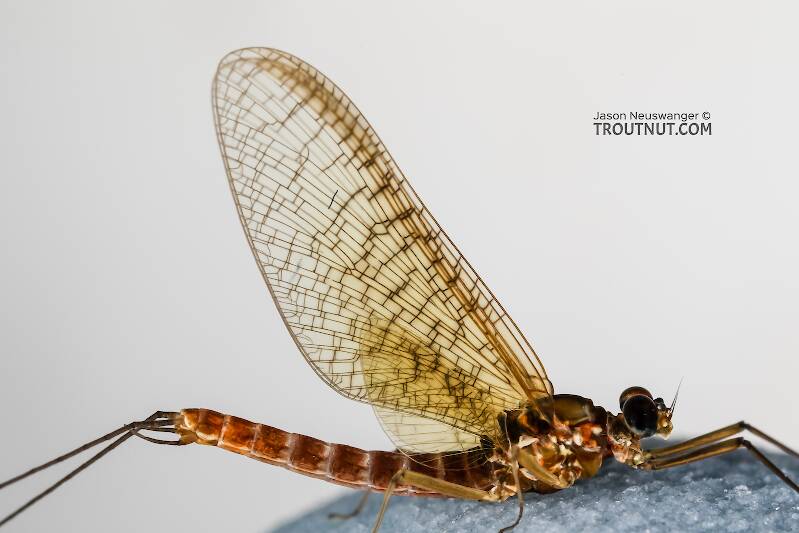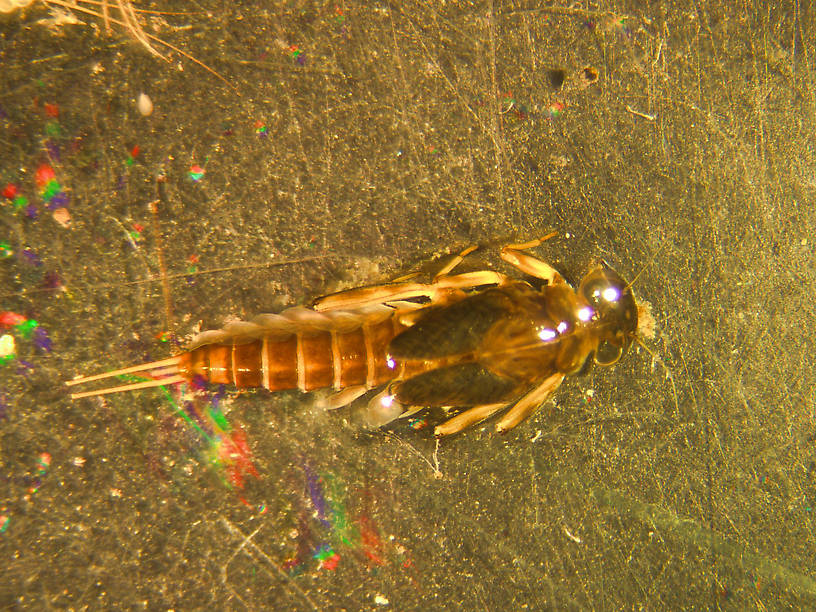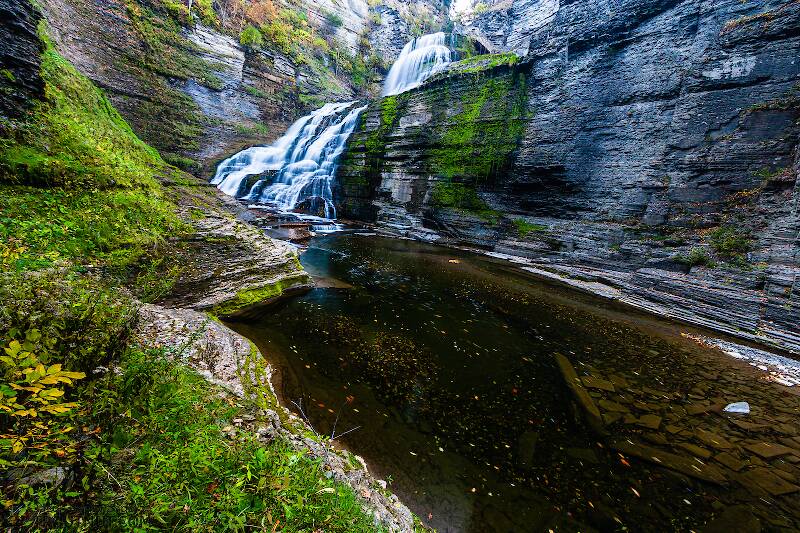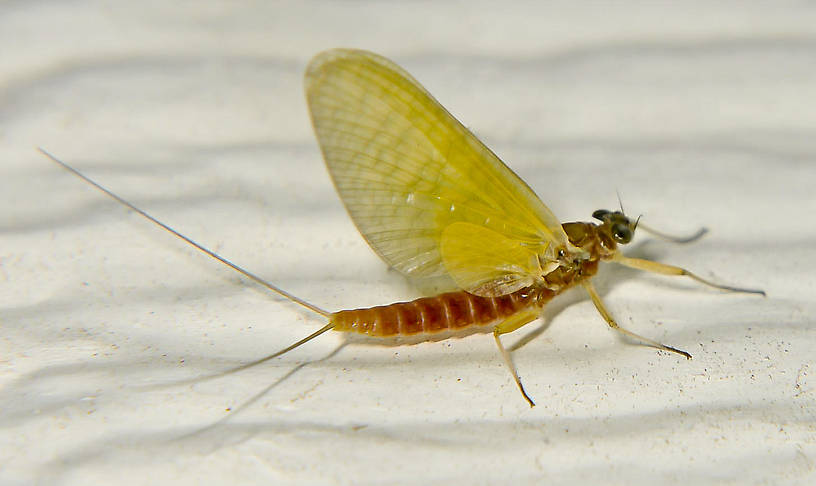
Blue-winged Olives
Baetis
Tiny Baetis mayflies are perhaps the most commonly encountered and imitated by anglers on all American trout streams due to their great abundance, widespread distribution, and trout-friendly emergence habits.
Featured on the forum

This one pretty clearly keys to Kogotus, but it also looks fairly different from specimens I caught in the same creek about a month later in the year. With only one species of the genus known in Washington, I'm not sure about the answer to this ID.

Troutnut is a project started in 2003 by salmonid ecologist Jason "Troutnut" Neuswanger to help anglers and
fly tyers unabashedly embrace the entomological side of the sport. Learn more about Troutnut or
support the project for an enhanced experience here.
Small Western Ginger Quills
This common name refers to only one species. Click its scientific name to learn more.
Mayfly Species Cinygmula reticulata
These are very rarely called Small Western Ginger Quills.
Cinygmula reticulata is probably the second most important species of Cinygmula behind Cinygmula ramaleyi, perhaps because the waters where it can be found in good numbers are often more remote. They have been reported as abundant in many high country streams of the Southern Rockies as well as the High Sierra's Eastern slope. An obvious difference in their coloration may be the easiest way to tell them apart. Cinygmula ramaleyi is more somber with a brownish body and dark gray wings and is often confused with the similar sized and colored Ephemerella tibialis, in spite of the difference in tail counts. Cinygmula reticulata on the other hand is a bright cinnamon dorsally with pale creamy legs and pale wings that are often a brilliant canary yellow. This is one of North America's most beautiful mayflies.

The lengths of the wing and body, measured with a caliper, are both 8 mm.
Keys in Needham's 1935 Biology of Mayflies point to either Cinygmula reticulata or Cinygmula gartrelli. It seems to have crossveins in costal half of forewing only, slightly margined with brown and wings tinged with amber at base and along costal margin of both wing (gartrelli) as opposed to all crossveins of both wings faintly but broadly margined with pale smoky and wings entirely amber-tinged (although there is a slight amber tinge throughout, just more pronounced in places) as in reticulata. However, wing length reported for reticulata (9 mm) is closer to this specimen than gartrelli (10 mm). Ventral median marks are supposed to be "traces" for reticulata and "present" for gartrelli. Descriptions for both species involve semi-hyaline anterior abdominal segments not present on my specimens. Distribution records suggest reticulata lives nearby, so I'm going with that, but I can't confidently rule out gartrelli.
Keys in Needham's 1935 Biology of Mayflies point to either Cinygmula reticulata or Cinygmula gartrelli. It seems to have crossveins in costal half of forewing only, slightly margined with brown and wings tinged with amber at base and along costal margin of both wing (gartrelli) as opposed to all crossveins of both wings faintly but broadly margined with pale smoky and wings entirely amber-tinged (although there is a slight amber tinge throughout, just more pronounced in places) as in reticulata. However, wing length reported for reticulata (9 mm) is closer to this specimen than gartrelli (10 mm). Ventral median marks are supposed to be "traces" for reticulata and "present" for gartrelli. Descriptions for both species involve semi-hyaline anterior abdominal segments not present on my specimens. Distribution records suggest reticulata lives nearby, so I'm going with that, but I can't confidently rule out gartrelli.

I collected several live specimens of nymphs and reared them to the imago stage. They were C. reticulata. The interesting thing is they were collected in May and were emerging along with Rhithrogena (March Brown). This seems to be an overlooked hatch since in some rivers it emerges very early, before runoff.


